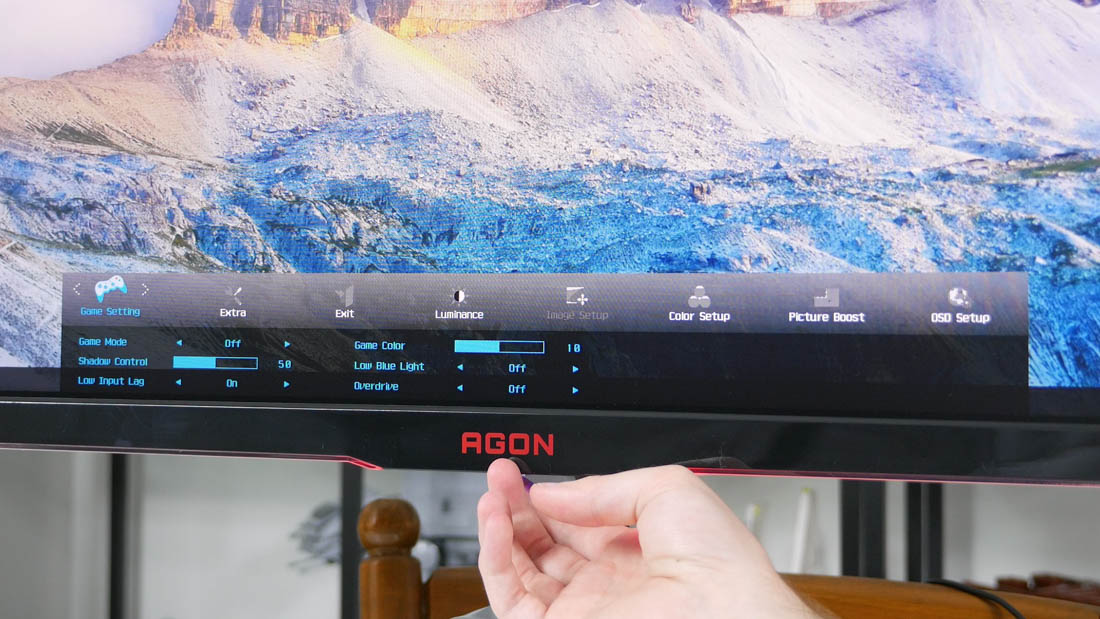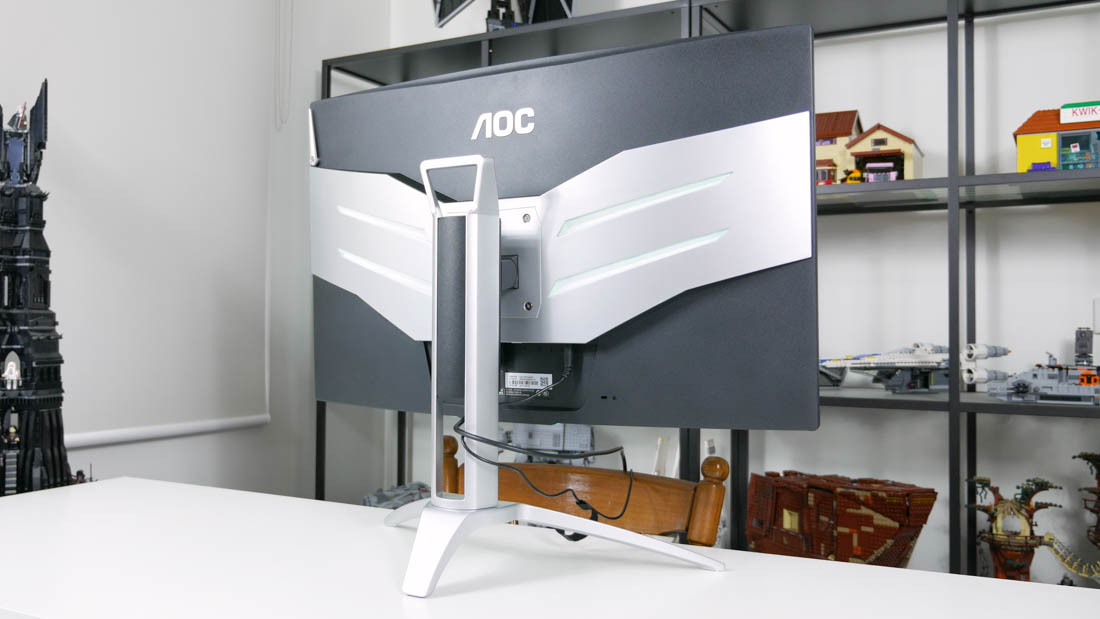AOC, we need to talk about your product names. The monitor I have to review today has a name that's simply too long and complicated for anyone to remember. It's called the Agon AG322QCX, which no one sane will remember after reading it. And that's a shame, because there's quite a memorable spec sheet to discuss.
It's a 31.5-inch, 1440p curved display (1800R) with a maximum refresh rate of 144 Hz. It uses MVA technology, so we're getting a great mix of contrast, color performance, viewing angles and response times. It supports FreeSync, which is great for those with AMD graphics cards.
And if you want an AG322QCX? You're looking at $430 when it hits the United States, which is a great price for this sort of hardware.
Before discussing anything else, I wanted to talk a bit about this monitor's curve. Normally I'm not a huge fan of curved displays unless they're ultrawide, but at this size - nearly 32 inches - I think the curve works provided you're sitting reasonably close. The sheer size of this display means that at a comfortable viewing distance, it occupies most of your field of view, and the subtle curve helps to keep the display immersive for gaming.
The design is not one of AOC's best. To be honest, the build quality looks a bit cheap: most of the display housing is very basic plastic in either black or silver, with noticeable seams and quite an unattractive raised bar along the bottom of the panel. The stand is a shiny silver metal, though there's just something about the coating that makes it look less premium than other stands I've seen recently. It requires a screwdriver to construct as well, which is always a bit of a pain.
Forget the build quality, though, the worst aspect to this monitor's design is the LED lighting. This monitor packs lighting on both the rear and along the bottom edge, which can be set to one of three colors. Technically it's RGB, as it can display red, green and blue, but that's literally it. It also just doesn't look good: the bottom light strips are unevenly lit and the rear lighting suffers the same fate. Disabling the lighting is the best choice.
While this is far from the best monitor design I've seen, it does have some positive aspects. The bezels are relatively slim - not as slim as what AOC portrays and states on their website, but slim nonetheless - and the stand supports tilt, swivel and height adjustment. The range of motion here is great, and every position feels sturdy. You can't use the display in a portrait orientation though, which I guess doesn't make sense with a curved panel anyway.
Another great aspect is the connectivity: there's lots of it. It's not a G-Sync panel, so there's no limit on inputs, and AOC has taken full advantage by offering two DisplayPort 1.2 inputs, two HDMI 2.0 ports, and VGA. There's a USB hub too, along with 3.5mm audio input (for the weak included speakers), a 3.5mm audio output for headphone passthrough, and a further couple of 3.5mm jacks for microphone passthrough. These passthrough ports are handy for cable management and tie in nicely with the fold-out headphone stand on the right-hand side.
I'm really glad AOC went for a directional toggle for their on screen display. It's the only good way to navigate through the many options included with modern gaming monitors. What you'll find here is all the usual stuff, like game modes, low blue light, a shadow boosting feature, and even a weird mode called Picture Boost that I don't know when you'd use. Of course, there's also some picture quality controls, which I'll use a bit later for calibration purposes.
Gamers will love the 144 Hz refresh rate this monitor provides. High-refresh panels of this size are relatively uncommon, especially with a resolution of 2560 x 1440. The combination of size, a decent resolution, and a high refresh rate makes this an attractive option for anyone who wants to be immersed in games but would rather not splurge on a large ultrawide.
In an article I wrote earlier this year, I discussed how high-refresh 1440p is the best option for gamers right now, and that still holds today. If you have a GTX 1070 or Vega 56, 1440p gaming at 60 FPS or better is very achievable, and those with faster GPUs will more frequently be able to push up towards that 144 Hz limit. If your hardware isn't that good right now, a monitor like this still gives you room to grow when you upgrade in the future.
Of course, AMD users will be more inclined to buy this monitor as it supports FreeSync. Those with Nvidia GPUs won't get the benefits of variable refresh technology, however if you're planning to game at high frame rates, this isn't a big deal. Currently, at least as far as I'm aware, there is no G-Sync alternative to this AOC monitor on the market just yet.
Let's talk about the LCD panel. You'll be glad to know this is an MVA panel, so we're getting excellent viewing angles despite the curvature, along with a reasonably high 2000:1 rated contrast ratio. Response times are okay, 4ms grey-to-grey according to the spec sheet, which isn't quite as fast as a top-end TN but still decent for gaming. I didn't find ghosting, pixel response or motion blur to be a significant issue with this display, especially if you set overdrive to medium.
AOC claims the monitor is good for 300 nits of peak brightness, though in my testing I achieved 266 nits, which is still well above what most people will use comfortably. The contrast ratio actually exceeded what AOC listed, at 2081:1 with a very good peak black point of 0.13 nits. This ratio is held quite well throughout the brightness range too: at 100 nits, it was still 2066:1.

There are some issues with uniformity, which isn't unusual for a curved display. My review unit was tinted slightly red along the left half, progressing to a more yellow tone in the right half. The deltaE difference we're talking about is as high as 4.8 relative to the center of the display, which is easily noticeable when viewing a solid color. Not a huge issue for gamers, but it's a known problem with a lot of curved panels and something to be aware of.





